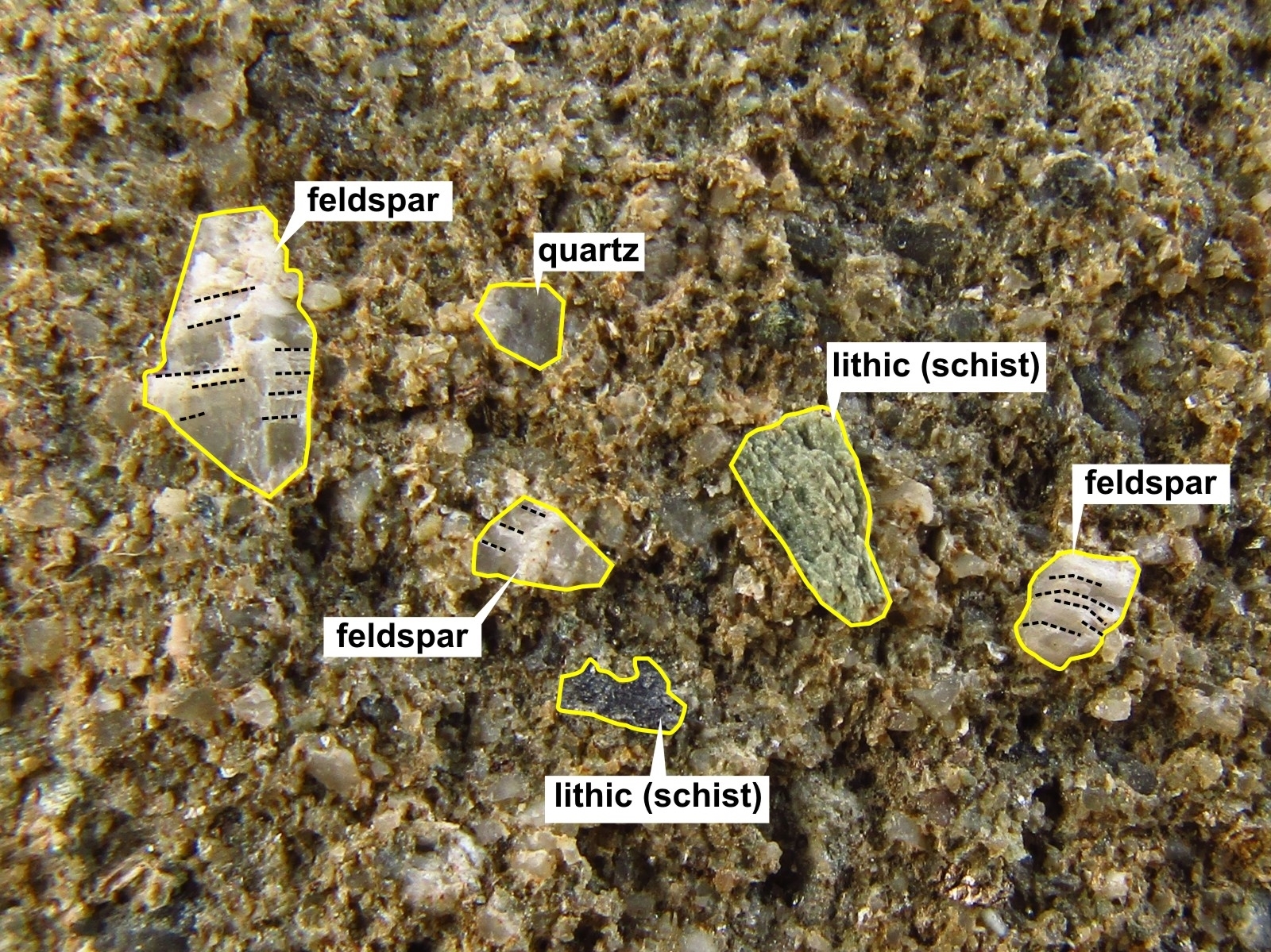The Science of Trapped Charges
Optically Stimulated Luminescence (OSL) dating determines the time elapsed since mineral grains, typically quartz or feldspar, were last exposed to sunlight or sufficient heat. It's a type of luminescence dating widely used in geology and archaeology to date sediments.
How It Works: The Natural Dosimeter
Minerals like quartz and feldspar have crystal lattice structures with imperfections. When exposed to natural background radiation (from uranium, thorium, potassium isotopes in the surrounding sediment, plus cosmic rays), electrons get trapped in these imperfections. The longer the mineral is buried, the more radiation it absorbs, and the more trapped electrons accumulate. Exposure to sunlight 'resets' this clock by releasing the trapped electrons. OSL dating measures the accumulated dose since the last resetting event (burial).

Methodology: Measuring the Stored Signal
OSL dating requires careful sample collection in the dark and precise laboratory measurements:
Samples (usually sediment) must be collected without exposing them to light. This often involves hammering opaque tubes into sediment faces or collecting samples under dark cloths at night.
In subdued red light (which doesn't reset the OSL signal), mineral grains (quartz or feldspar) are extracted, purified using chemical treatments (HCl, HF), and sieved to isolate specific grain sizes.
Grains are placed in a specialized reader. They are stimulated with light (typically blue or green LEDs for quartz). This releases the trapped electrons, causing them to emit light (luminescence). The intensity of this emitted light is proportional to the radiation dose absorbed during burial.
The radiation dose rate from the surrounding environment must be measured. This involves analysing the sediment sample (and sometimes surrounding materials) for radioactive elements (U, Th, K) and calculating the dose rate, considering factors like water content.
Age Calculation
The age is determined by dividing the total radiation dose absorbed by the mineral grains (the Palaeodose or Equivalent Dose, De) by the rate at which the dose was absorbed (the Dose Rate, Dr).
Age = Palaeodose (De) / Dose Rate (Dr)
- Palaeodose (De): Determined by measuring the OSL signal from the sample and calibrating it against known laboratory radiation doses (measured in Grays, Gy). Various protocols (like the Single-Aliquot Regenerative-dose, SAR, protocol) are used to ensure accuracy.
- Dose Rate (Dr): Calculated from the concentrations of radioactive isotopes (U, Th, K) in the burial environment, plus the cosmic ray contribution, adjusted for water content (measured in Grays per thousand years, Gy/ka).
Example
If a quartz sample has absorbed a Palaeodose of 50 Gy, and the environmental Dose Rate is calculated to be 2 Gy/ka (or 2 mGy/year), the OSL age would be 50 Gy / (2 Gy/ka) = 25,000 years (25 ka).
Applications of OSL Dating
OSL dating is versatile, primarily used for dating the deposition of sediments:
1. Geology & Geomorphology
Dating glacial deposits, river terraces, lake sediments, coastal dunes, desert sands (loess), and volcanic ash deposits. Reconstructing landscape evolution and past environmental changes.
2. Archaeology
Dating the burial of archaeological sites and features within sedimentary contexts. Dating sediments associated with artifacts or human activity, providing age constraints for occupations. Dating heated stones from hearths (using related Thermoluminescence, TL).
3. Palaeoseismology
Dating sediments offset by earthquakes to determine the timing of past seismic events.
4. Forensic Science
Potentially dating the last exposure of materials to light in specific forensic contexts.
Limitations and Considerations
OSL dating is powerful but subject to certain limitations:
Material Suitability
Requires minerals like quartz or feldspar that have good luminescence properties and were present in the depositional environment.
Incomplete Bleaching (Zeroing)
The most significant challenge. If mineral grains were not sufficiently exposed to sunlight before burial (e.g., rapid deposition in muddy water, transport within soil aggregates), they retain a residual signal, leading to age overestimation. Statistical methods (analysing many individual grains) can help identify and sometimes correct for this.
Dose Rate Complexity
Accurate dose rate calculation is crucial. Variations in sediment composition, changing water content over time, or burial depth (affecting cosmic dose) can introduce uncertainties. Radon gas escape can also affect the dose rate.
Signal Stability & Saturation
The trapped electron signal can fade over time (anomalous fading), particularly in feldspars, potentially causing age underestimation if not corrected. At very high doses, the traps become full (saturation), limiting the upper age range of the method (typically a few hundred thousand years for quartz, potentially older for feldspar).
Post-Depositional Disturbance
Mixing of sediments after deposition (e.g., bioturbation by animals or roots) can complicate dating by introducing grains of different ages into a sample layer.
Conclusion
Optically Stimulated Luminescence dating is a sophisticated technique that has revolutionized our ability to date sedimentary deposits. From understanding past climate changes to archaeological investigations, OSL provides crucial temporal frameworks for interpreting Earth's history and human evolution.
Key Advantages
- Direct dating of sediment deposition (not just organic materials)
- Covers a wide age range (decades to hundreds of thousands of years)
- Can be applied to various depositional environments
- Relatively small sample sizes required
- Provides age control for otherwise undatable materials
Ongoing Developments
Advances in OSL continue to improve accuracy and expand applications. Single-grain dating allows for better identification of problematic samples, while developments in measurement protocols and statistical analysis continue to refine age estimates. The method remains an essential tool in the geosciences toolkit.